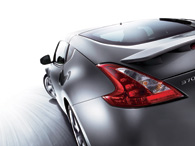
About 40 years ago, the first Z car from Nissan, the 240Z debuted in America and it became an instant hit. The stylish, but derived looks of the 240Z was backed by strong performance, joy inducing dynamics and most importantly, affordable prices.
The recipe of the 240Z was simple and the execution was brilliant. Nissan introduced sound and reliable technology, an art that eluded Italian and American sports cars.
Subsequent models to the Z cars were much like most typical teenage prodigy’s career. The mistake of believing that customers wanted more power and luxury resulting in bloated and dull to drive Z cars. It wasn’t until 2002’s 350Z that helped Nissan’s iconic sports car series to storm back into relevance and prominence.
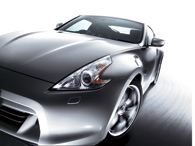
The success of the ‘02 350Z was simple; Nissan only needed to stick closely to the formula laid down by the ’69 240Z. And the 2009 Nissan 370Z showcased Nissan’s determination to stay on the right track; to maintain the Z car’s position as the world’s best selling sports car series of all time.
The 370Z retains the distinctive silhouette of the 350Z, but with those swollen rear arches and pinched waist, the new coupe looks smashing enough to challenge the likes of the Audi TT and BMW Z4. Perhaps the devil is in the details; the shorten wheelbase (by 100mm) and aluminum doors, boot-lid and bonnet helped to make the 370Z 15kg lighter than it’s predecessor. Not a bad effort considering the efforts by Nissan to meet more stringent crash standards.
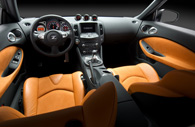
Shoehorning the 370Z with a 3.7 litre V6 engine that kicks out 333 hp and 365Nm of torque gives way to a 6.2 secs for the century dash. Our test unit came with a seven-speed automatic gearbox, which is not bad for two-pedals die-hards as the pedal shifts on the steering are quite fun to use. Opting for the six-speed manual transmission would mean 5.8 secs from 0-100km/h and perhaps more driving joy. An incentive to go for the manual 370Z would be the Rev Synchro Control which automatically blips the throttle when you make a downchange, perfectly imitating a heel-and-toe shift.
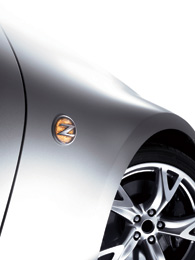
Regardless of your choice of gearboxes, the 370Z demands that you rev your nuts off to have access to the performance, as pretty much nothing happens till past 3000rpm. And you will be willing to, as the six-cylinder engine snarls with a vigour that is addictive. In any case, it will be hard to achieve the 11.0 litres per 100km as claimed by the manufacturer given how hard the 370Z begs to be spanked.
Nissan has identified the Porsche Cayman as the 370Z’s target of dynamic excellence. While matching the Porsche mid-engine coupe for drama and excitement, the Nissan 370Z fails to match the gold standard as the Cayman remains the lighter and more satisfying to steer. But there is so much to recommend about the 370Z’s fast reacting steering and great sense of balance.
No doubt the 370Z is fun to drive under the right conditions, we are not so sure about the ride quality. Let’s just say that Nissan has traded the comfort for grip and agility. Driving first, comfort second.
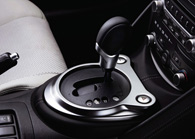
In any case, Nissan would love to point you to their up-market brand, the Infiniti G37 coupe if comfort is your priority. The two cars share the same mechanical-architecture, with the two-seater 370Z being more driver-focused.
Sharing some DNA with the Infiniti means that the cabin quality is much improved; if you avoid contact with all the (fake) aluminum fittings. The “metal-ish” looking door handles look and feel tacky. Also, the 370Z lacks reach adjustments for the steering wheel, unfortunately for the otherwise perfect driving position.
Nissan’s love affair with America continues as the latest 370Z subscribes to the same simple values that made the original 240Z, 40 years ago, so achingly desirable. Would you pick the Nissan 370Z over a BMW Z4 sDrive35i for saving S$80,000? Well, the latest Z-car is worthy of a consideration, if you can get over the stiff ride and err, the badge?
Nissan’s Global HQ is based in Nishi-ku, Yokohama, Japan.
| Engine | 3,696 cc DOHC 24-valve V6 |
| Transmission | 7-Speed Automatic with manual mode |
| Wheels Driven | Rear wheels |
| Max. Power | 333 hp@ 7000rpm |
| Max. Torque | 363 Nm@ 5200rpm |
| 0-100 km/h | 6.2 secs |
| Top speed | 250 km/h |
| Fuel Economy | 11.0 litres per 100km (Combined) |
| CO2 Emissions | N.A |
| Dimensions (L x W x H) / Weight | 4,250 X 1,845 X 1,315 / 1,490 kg |
| Price with COE* | S$163,800 |











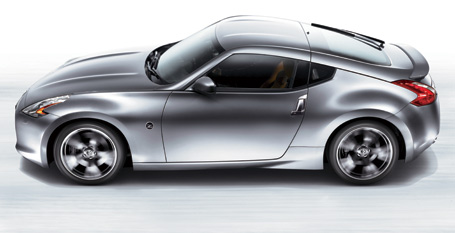
 Printable Version
Printable Version










Reader's Comments
Why do some auto articles still compare the crappy wannabes with the real McCoy?
Please log in to use this feature.